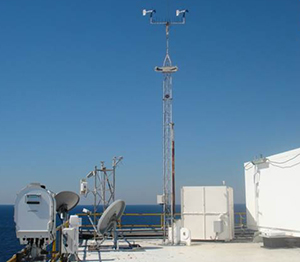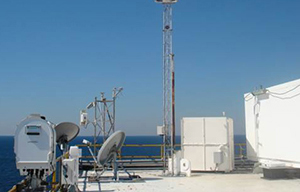Improving Meteorological and Air Quality Modeling in the Gulf of Mexico
Clients
Bureau of Ocean Energy Management (BOEM)
Sonoma Technology, with our partners National Oceanic and Atmospheric Administration, Lousiana State University, and the University of Colorado, deployed a range of sensors including a mini-sodar (for boundary layer winds), a sonic anemometer and fast response humidity sensor (for air-sea flux measurements), a microwave radiometer (for vertical temperature and humidy profiles), and an infrared sea skin temperature sensor on a platform in the Gulf of Mexico.
<br>
Data collected by these instruments was used to
<ul>
<li>Improve understanding of air-sea interaction and greenhouse gas exchange between the ocean and atmosphere</li>
<li>Improve the ability of meteorological models to properly represent micro-, local-, and meso-scale processes that strongly impact weather, air quality, and climate</li>
<li>Support analyses that compare boundary layer measurements to COARE-calculated boundary layer data</li>
<br>
Data collected by these instruments was used to
<ul>
<li>Improve understanding of air-sea interaction and greenhouse gas exchange between the ocean and atmosphere</li>
<li>Improve the ability of meteorological models to properly represent micro-, local-, and meso-scale processes that strongly impact weather, air quality, and climate</li>
<li>Support analyses that compare boundary layer measurements to COARE-calculated boundary layer data</li>
Air Quality
Data Management
Instruments
Meteorology


Clinton P. MacDonald

Clinton
P.
MacDonald
President / Chief Scientist
Clint@sonomatech.com
/sites/default/files/2023-02/CPMres.pdf
